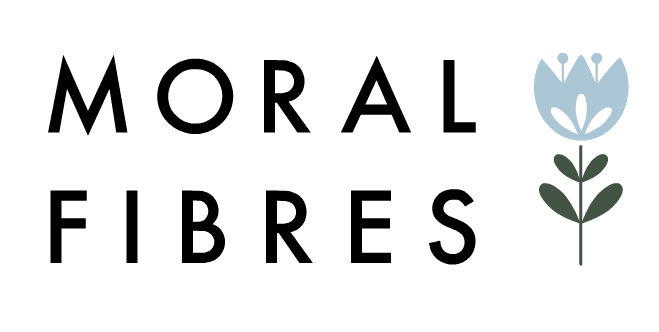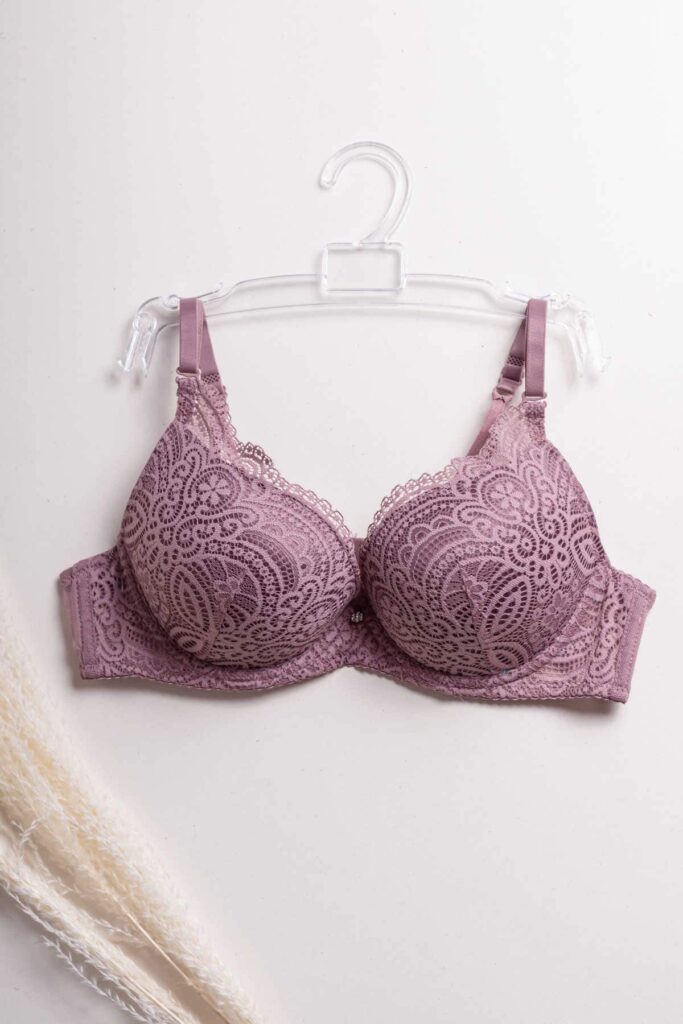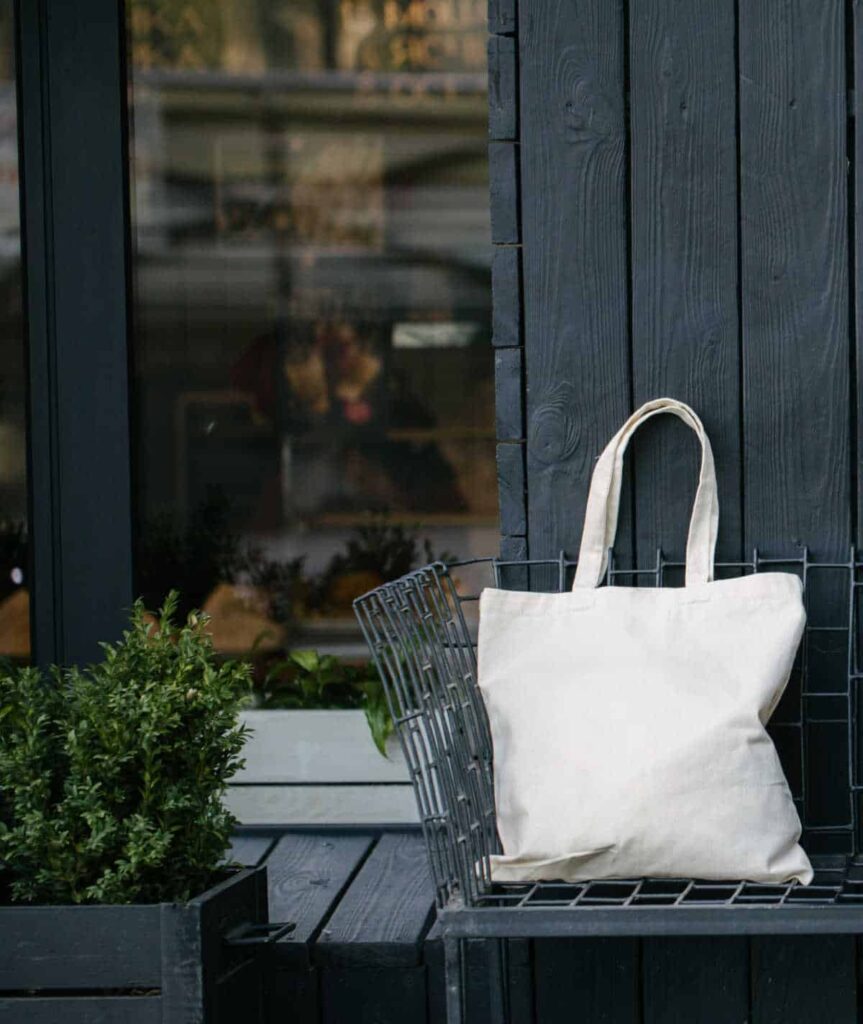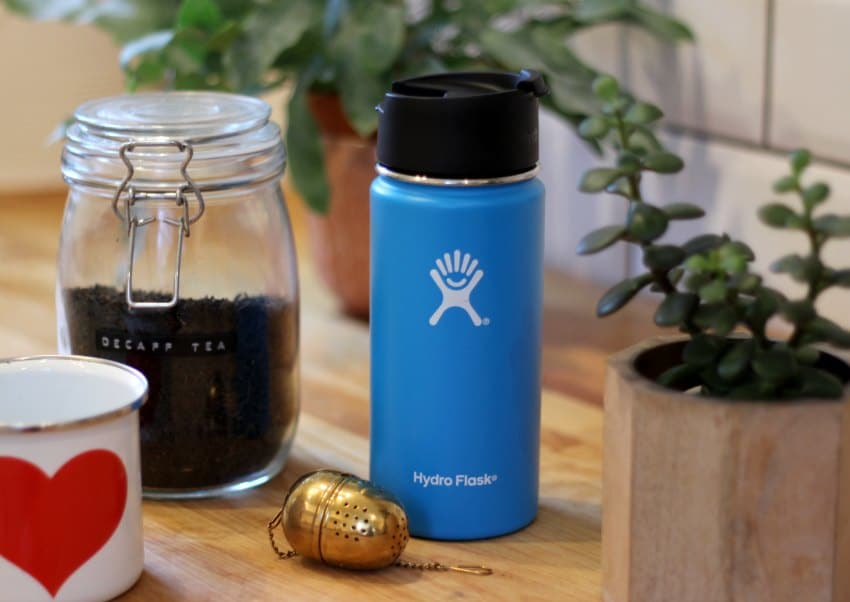How To Attract Bees to Your Garden
To support the running costs of Moral Fibres, this post may contain affiliate links. This means Moral Fibres may earn a small commission, at no extra cost to readers, on items purchased through these links.
Want to know how to attract bees to your garden? Let me share with you my bee-based secrets!
The poor bees have taken a beating lately. Between wet summers, a reduction in their natural habitat, disease, and the recent decision to reintroduce the use of pesticides harmful to bees, the number of butterflies and bees in the UK has drastically plummeted.
Which as well as being bad news for bees, is bad news for us. This is because it’s estimated that at least a third of the plants we eat are directly or indirectly dependent on being pollinated by bees.
It’s safe to say that our little fuzzy friends need all the help they can get. One easy thing you can do is to make your garden bee-friendly.
Un-bee-lievable Ways To Attract Bees To Your Garden
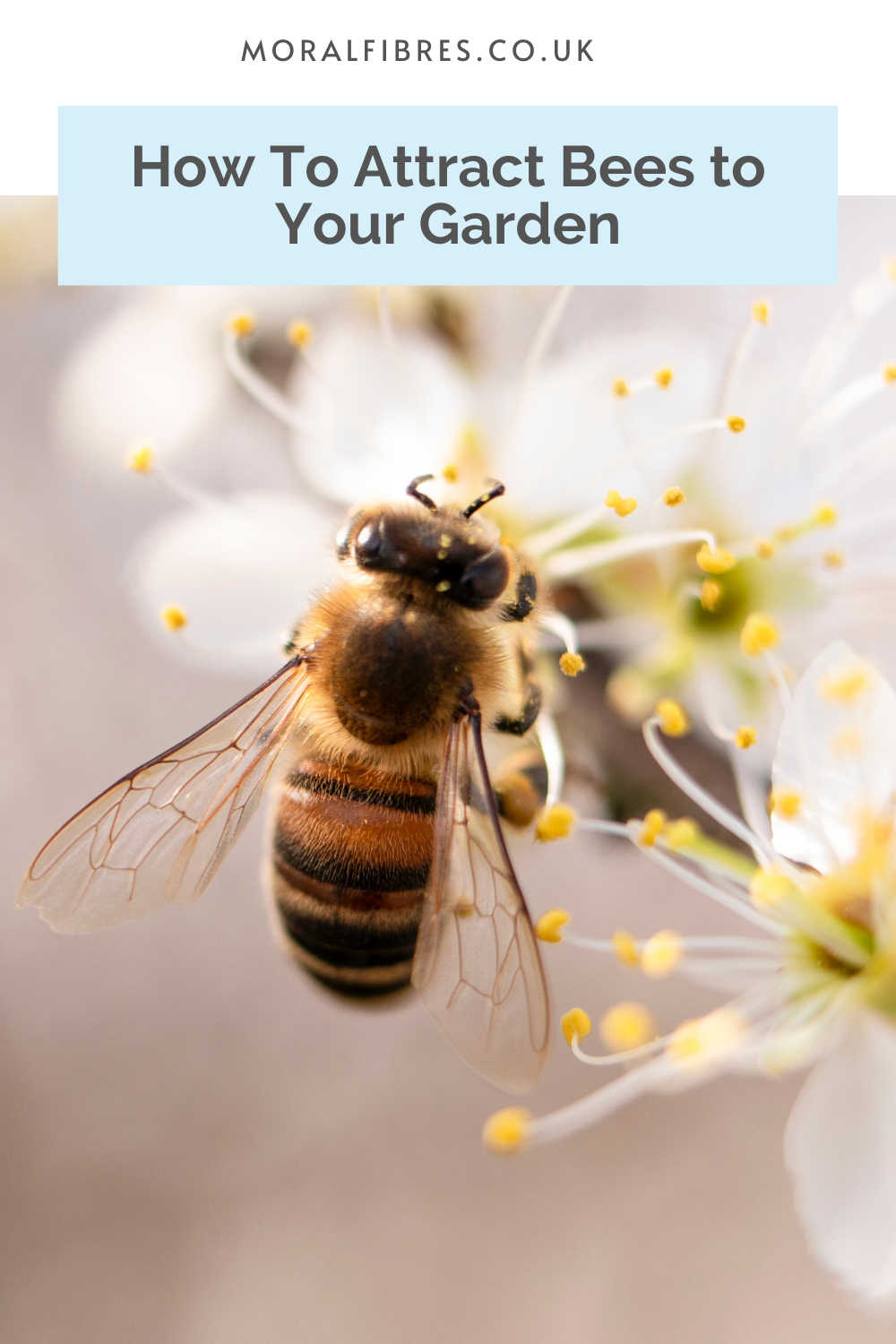
Here are my top tips to help attract bees and other pollinators to your garden:
- Plant Bee-Friendly Flowers
- Avoid Certain Types Of Plants
- Add A Bug Hotel
- Provide Water
- Leave Patches Of Weeds
- Don’t Use Pesticides
Plant Bee-Friendly Flowers
What you plant has a big impact on attracting bees to your garden. Aim to plant a diverse mix of nectar and pollen-rich plants, that have a range of different flowering periods throughout the year.
Not sure what to plant? Steer towards traditional native plants. Think cottage garden and you’re on the right lines. From bluebells and foxgloves to hollyhocks and honeysuckle, as well as other classic British varieties such as alliums, butterburs, hellebores, and geraniums.
If you want something that you can enjoy as much as the bees then edible flowering herbs are a great choice. Herbs such as chives, thyme and lemon balm are highly valued by bees. These are also great choices for window boxes if you don’t have a garden.
Do check out my guide to bee-friendly plants for more planting advice.
Avoid Certain Types Of Plants
Horticultural plants are those that have been selectively bred for certain qualities, such as their ornamental value. These plants may look pretty but are not necessarily the most useful for bees and other pollinators.
As a rule, avoid plants with double or multi-petalled flowers, such as double begonias, petunias, or pansies. These flowers are filled with petals and pollinators find them difficult to access the nectar part of the flower. In some cases, the nectar part of the flower may not exist, and it may lack pollen.
If you really love these types of plants, use them as part of a wide range of flowers in your garden.
Add A Bug Hotel
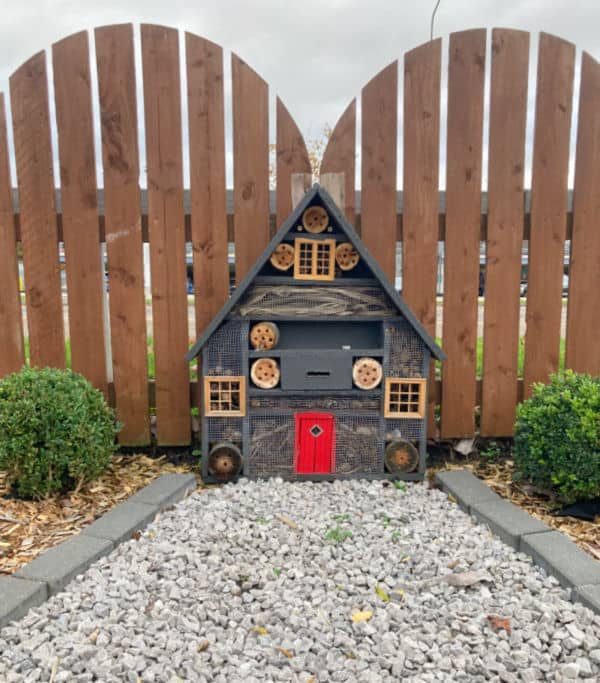
Whilst some bees – like honeybees and bumblebees- live in colonies or hives, 70% of the world’s 20,000 bee species actually live largely solitary lives. These solitary bees live in the ground or wherever they can make a nest.
To help attract and encourage solitary bees to lay eggs in your garden, a bug hotel is a great thing to install. Bug hotels help provide temporary residences for solitary bees to nest in, and hibernate in during the winter months.
We’ve had a couple in our garden for the past few years now, and it has been amazing to sit and watch the bees going in and out of it, and stuffing it with bits of leaves.
Of course, you don’t have to go out and buy a bug hotel. For a low-cost option, you can bundle some bamboo canes in a southwest corner of your garden, out of prevailing winds. You can also drill holes in some bits of wood, which will also do the job the no-cost way.
Provide Water to Attract Bees
It’s also a little-known fact that bees need drinking water. Honey bees, in particular, use water to cool down their hives, and also use water to thin their honey when it crystallises. However, water is also important to all species of bees to help them digest food.
Setting up a bee drinking station is a quick job. A small shallow dish in your garden filled with pebbles will suffice – you don’t want to drown the bees. Make sure some pebbles sit above the water, to allow the bees somewhere to rest whilst collecting water.
Here’s my full guide to making your own bee watering station, using items you probably already have in your garden.
Make sure you keep your dish topped up with water throughout the summer. Collecting precious nectar and pollen is thirsty work after all.
Leave Patches Of Weeds
If all this gardening sounds like too much hard work then don’t worry. Lazy gardeners the country over will be rejoicing when I say don’t be too harsh on the weeds.
Weeds offer precious pollen and nectar to bees – with dandelions being one of the first plants to flower in early spring at a time when other sources of pollen and nectar are scarce. Meanwhile, most weeds are just as beneficial as any other plants in your garden, if not more beneficial.
So there you go – a nice excuse to put your feet up and let the weeds poke through. You’re doing it for the bees!
Even if you are a proud gardener, it’s prudent to leave an area of your garden to weed over for wildlife in general. Many plants that we consider weeds provide valuable sources of food for a whole host of wildlife.
The best bit is, that the more bees you can attract to your garden, the more your garden will grow with minimal effort from you. This is because the bees will do all the hard work of pollinating all of your flowers and vegetables. So in return for helping the bees, you’ll be rewarded with strawberries, tomatoes, apples and other crops that rely on pollination.
Don’t Use Pesticides
May insecticides contain chemicals that can kill or harm bees and other beneficial pollinators. I always recommend adopting an organic approach to garden, without the use of pesticides or fungicides.
Attracting a wide range of insects to your garden also attracts birds and small mammals, which feed on common garden pests. Get the balance right and nature will help regulate pests in your garden naturally.
The Bottom Line
Bees are in decline, but there are easy ways to help reverse that. It’s easy to attract bees to your garden and create a bee-friendly oasis for them. You can add a few more bee-friendly plants to the mix or add a bug hotel or a bee watering station. Or you can go easy on the weeds and adopt a more organic approach to gardening. Whatever you do, your garden will soon be buzzing with life.
PS: Even if you don’t have a garden, here’s how to help the bees. And find out how to revive tired bees in case you find one on the ground in your garden.
Found this post useful? Please consider buying me a virtual coffee to help support the site’s running costs.
